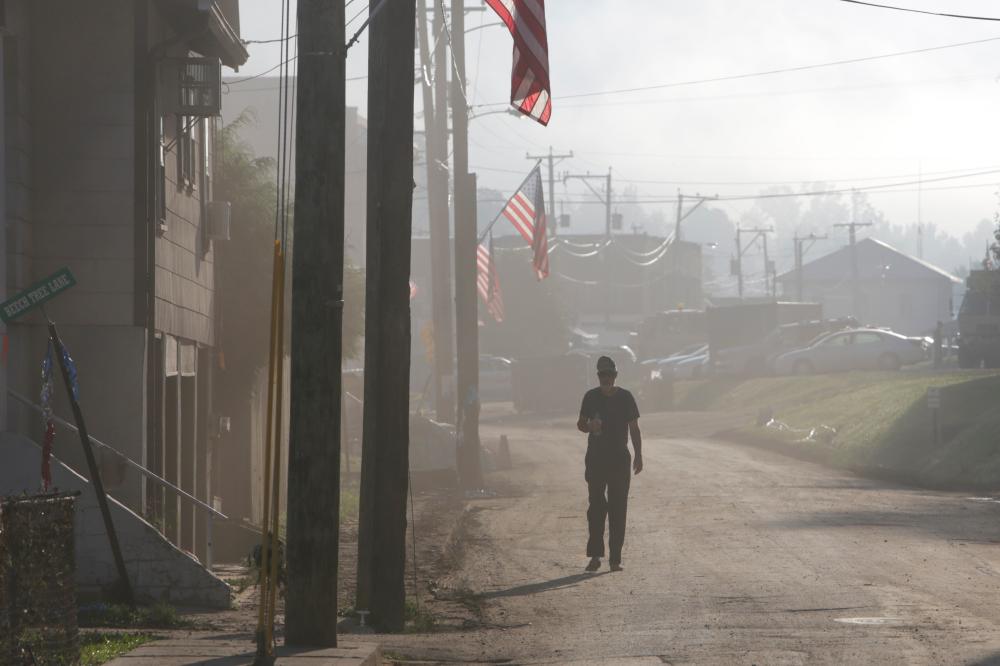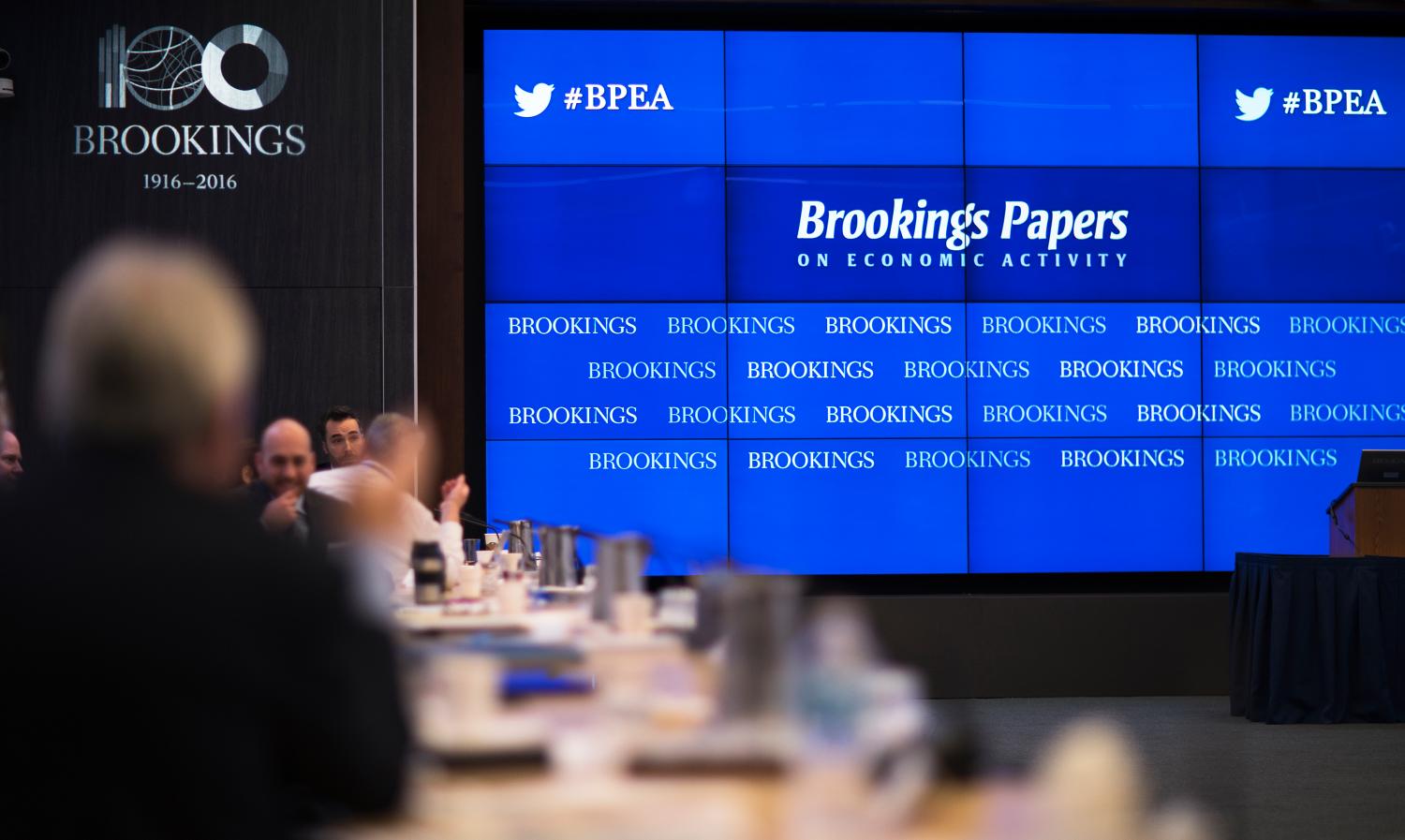


The Brookings Papers on Economic Activity (BPEA) is an academic journal published by the Brookings Press twice a year. Each edition of the journal includes five or six new papers on macroeconomic topics currently impacting public policy.
Below you’ll find six new papers submitted to the Spring 2017 journal and presented at Brookings on March 23-24. They include a much-anticipated follow-up to groundbreaking research from Anne Case and Nobel Laureate Angus Deaton on rising midlife mortality among white Americans, projections of drastically reduced immigration to the U.S. from Mexico and Latin America, a look at why estimates of the natural rate of interest continue to decline, and more.
Order the published version of the journal here. Sign up here to learn more about subscribing to the journal to read the final papers. Visit the BPEA search page or the Best of BPEA to browse research presented at past conferences from 1970 to present.
In “Mortality and morbidity in the 21st century,” Princeton Professors Anne Case and Angus Deaton, a Nobel Prize winner, follow-up their groundbreaking 2015 research that documented a dramatic increase in middle-aged white mortality.
In their new paper, the authors find that “deaths of despair” (deaths by drugs, alcohol, and suicide) in midlife rose most dramatically for white non-Hispanic Americans with a high school degree or less—a pattern that diverges sharply from overall midlife mortality rates in other rich countries.
When combined with a slowdown in progress against mortality from heart disease and cancer—the two largest killers in middle age—the increase in “deaths of despair” since the late 1990s has resulted in midlife mortality rates for white non-Hispanic Americans with a high school degree or less overtaking overall midlife mortality rates of minority groups.
Case and Deaton also document an accumulation of pain, distress, and social dysfunction in the lives of working class whites that took hold as the blue-collar economic heyday of the early 1970s ended and continued through the 2008 financial crisis and the subsequent slow recovery.

Anne Case, Angus Deaton
March 23, 2017
In “Along the watchtower: The rise and fall of U.S. low-skilled immigration,” Gordon Hanson, Chen Liu, and Craig McIntosh of the University of California San Diego project that immigration to the U.S. of young, low-skilled workers from Latin America will continue to slow until it reverses in 2050—even without changes to U.S. immigration and border policy—thanks to weak labor-supply growth in Mexico and other Latin American countries. Furthermore, the population of Latin American-born residents already in the U.S. over age 40 will grow by 82 percent over the next 15 years, presenting a bigger challenge for U.S. policymakers than how to stop or slow low-skilled immigration.
“The current U.S. debate about immigration policy has a backward-looking feel to it. The challenge isn’t how to stop large-scale labor inflows, which has largely been achieved, but how to manage a large, settled population of undocumented immigrants. Massive investments in building border barriers or expanding the U.S. Border Patrol are not going to address this challenge,” the authors argue.

Gordon Hanson, Chen Liu, Craig McIntosh
March 23, 2017
In “The disappointing recovery of output after 2009,” the Federal Reserve Bank of San Francisco’s John Fernald, Stanford’s Robert Hall, Harvard’s James Stock, and Princeton’s Mark Watson find that the unexpectedly slow growth since 2009 in output—the economy’s measure of growth—is unlikely to improve because it has been caused by structural, non-cyclical factors and not just the financial crisis and subsequent recession.
The authors also find evidence that weak government spending at all levels delayed the recovery. They attribute some of the unusually slow growth early in the recovery to cuts in federal spending from the sequester, the end of the of fiscal stimulus from the American and Reinvestment Recovery Act (ARRA), and changes in state and local level spending due to the recession’s causing home prices to collapse, which in turn impacted property tax receipts.

John Fernald, Robert E. Hall, James H. Stock, Mark W. Watson
March 23, 2017
In “Monetary policy in a low interest-rate world,” the Federal Reserve Board’s Michael T. Kiley and John M. Roberts find that rates could hit zero as much as 40 percent of the time—twice as often as predicted in work by others—according to standard economic models of the type used at the Federal Reserve and other central banks. The constraint on monetary policy imposed by frequent episodes of interest rates at zero could make it harder for the Fed to achieve its 2 percent inflation objective and full employment, and the analysis suggests that a monetary policy that tolerates inflation in good times near 3 percent may be necessary to bring inflation to 2 percent on average.
As a result, there are a number of steps the Federal Reserve and other central banks can take to help better achieve full employment and price stability in this low interest-rate environment.

Michael T. Kiley, John M. Roberts
March 23, 2017
In “Safety, liquidity, and the natural rate of interest,” Marco Del Negro, Domenico Giannone, Marc P. Giannoni, and Andrea Tambalotti of the Federal Reserve Bank of New York argue that the secular decline in the natural rate of interest (the real rate of return that prevails when the economy is at its potential) in the U.S. is primarily due to the strong demand for safe and liquid assets, and especially U.S. Treasury securities, provoked in part by foreign and domestic crises over the past 20 years. The analysis suggests the natural rate could rebound in the near future.
The authors also note that the “decline in interest rates poses important challenges for monetary policy, but it also matters for fiscal policy and for our understanding of the nature of business cycles.”

Marco Del Negro, Domenico Giannone, Marc P. Giannoni, Andrea Tambalotti
March 23, 2017
In “Is Europe an optimal political area?” Harvard University’s Alberto Alesina, Bocconi University’s Guido Tabellini and University of British Columbia’s Francesco Trebbi analyze cultural indicators across 15 EU countries and Norway from 1980-2009 to determine if the so-called European political project was “too ambitious.” The authors find cultural differences among Europeans are increasing and nationalism is on the rise despite several decades of economic and political integration.
The authors believe the EU is at a crossroads: It must choose between the benefit of economies of scale for environmental protection, immigration, terrorism, foreign policy, and promoting research and innovation versus the cost of rising nationalism. While a majority of Europeans seems to favor more EU-level decision-making, they seem dissatisfied with how those policies are being implemented and they disagree along national lines.

Alberto Alesina, Guido Tabellini, Francesco Trebbi
March 23, 2017